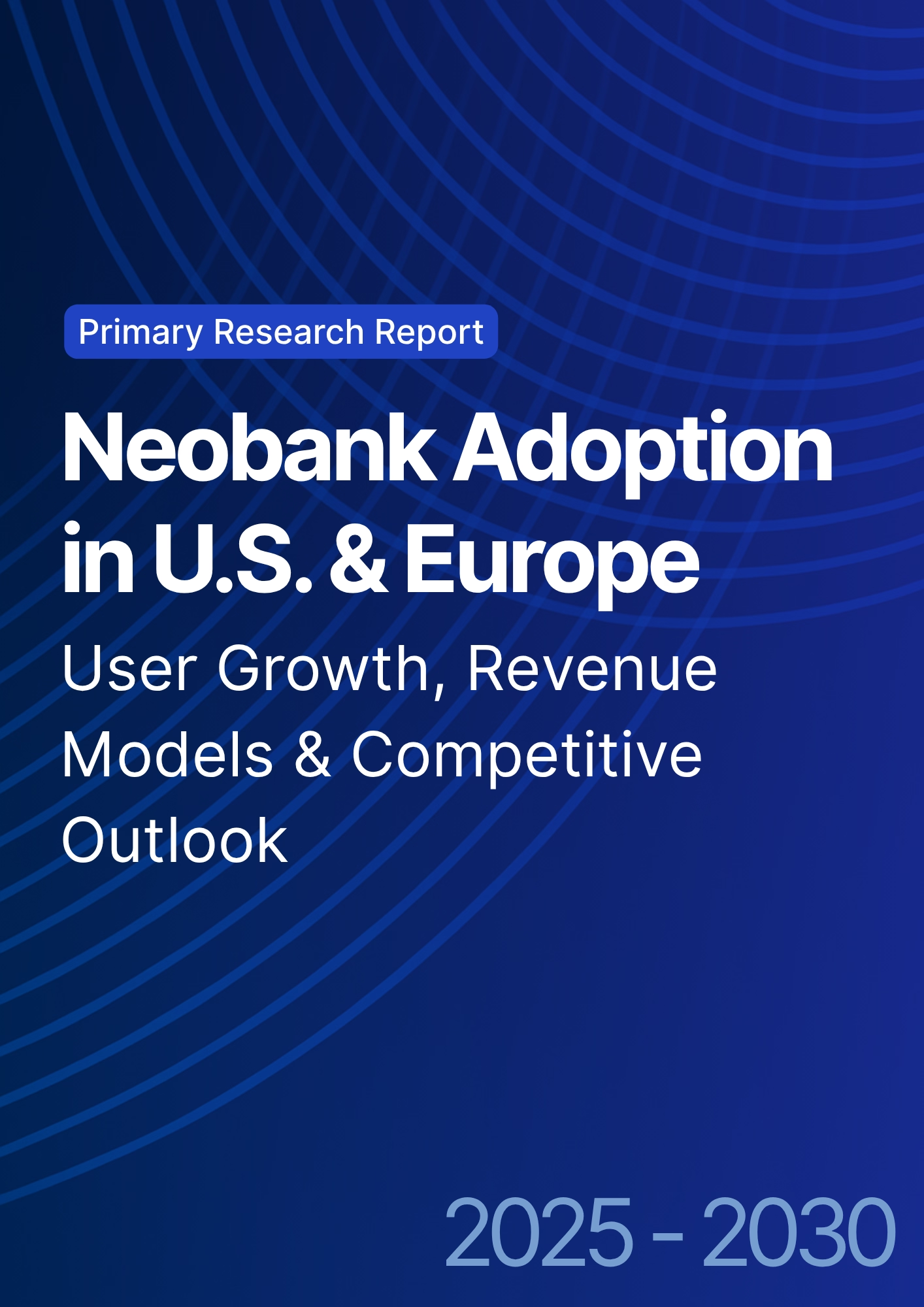

68 Circular Road, #02-01 049422, Singapore
Revenue Tower, Scbd, Jakarta 12190, Indonesia
4th Floor, Pinnacle Business Park, Andheri East, Mumbai, 400093
Cinnabar Hills, Embassy Golf Links Business Park, Bengaluru, Karnataka 560071
Connect With Us
Private Credit Market Size & Share Analysis – Growth Trends & Forecasts (2025–2030)
This research analyzes the private credit market in the US and EU from 2025 to 2030, focusing on market size, growth trends, and share analysis. The report quantifies asset under management (AUM) growth, deal volume, and regional adoption, while highlighting the impact of economic conditions, regulatory frameworks, and investor demand for alternative credit. It provides actionable insights for asset managers, private credit funds, and institutional investors, offering guidance on growth strategies, competitive positioning, and portfolio allocation in the evolving private credit landscape

What's Covered?
Report Summary
Key Takeaways
- Private credit AUM in the US projected to grow from $1.1 trillion in 2025 to $2.2 trillion by 2030, CAGR 14%.
- EU private credit AUM expected to rise from €600 billion in 2025 to €1.25 trillion by 2030, CAGR 15%.
- Deal volume in the US projected to reach $450 billion by 2030, up from $250 billion in 2025.
- EU deal volume expected to increase from €180 billion in 2025 to €360 billion by 2030.
- Senior secured loans expected to account for 55% of total AUM by 2030 in both regions.
- Direct lending share projected to increase from 35% in 2025 to 50% by 2030.
- Private credit yield spreads expected to remain 200–250 bps higher than public debt instruments.
- Institutional investors projected to contribute 70% of total inflows into private credit funds by 2030.
- US market dominance projected to account for 65% of global private credit AUM by 2030.
- ROI for private credit investments projected at 8–12%, depending on strategy and risk profile.
Key Metrics
Market Size & Share
The private credit market in the US and EU is projected to grow significantly from 2025 to 2030, with US AUM increasing from $1.1 trillion to $2.2 trillion, representing a CAGR of 14%, while EU AUM rises from €600 billion to €1.25 trillion, CAGR 15%. The US is expected to remain dominant, accounting for 65% of global private credit AUM by 2030, driven by mature institutional markets, high investor demand for yield, and favorable regulatory frameworks. Deal volume in the US is projected to reach $450 billion by 2030, compared to $250 billion in 2025, while EU deal volume increases from €180 billion to €360 billion.
Senior secured loans are projected to account for 55% of AUM, while direct lending will increase its share from 35% to 50% by 2030, reflecting investor preference for stable cash flows and capital preservation. Institutional investors are expected to contribute 70% of total inflows, fueling growth and providing stable capital to private credit funds. Yield spreads are projected to remain 200–250 bps higher than public debt, offering attractive risk-adjusted returns. Overall, private credit will continue to capture a growing share of alternative investment allocations, driven by demand for yield, flexible financing structures, and enhanced risk management tools.
.png)
Market Analysis
The private credit market in US and EU is shaped by strong institutional demand, favorable market conditions, and increasing appetite for alternative credit. US AUM is projected to double from $1.1 trillion in 2025 to $2.2 trillion in 2030, while EU AUM will more than double from €600 billion to €1.25 trillion. Deal volumes will rise in parallel, with US deal activity increasing from $250 billion to $450 billion and EU from €180 billion to €360 billion, driven by the expansion of direct lending and the growing role of senior secured loans. Direct lending is increasingly preferred, projected to account for 50% of total AUM by 2030, supported by stable cash flows and predictable risk-adjusted returns.
Yield spreads for private credit strategies are projected to remain 200–250 bps higher than public debt instruments, attracting institutional investors seeking income diversification. Institutional inflows will contribute 70% of total capital, highlighting the importance of pension funds, insurance companies, and endowments as long-term investors. Regulatory frameworks in the EU and US will play a significant role, influencing market growth, risk management practices, and investor protections. Overall, the private credit market will experience sustained growth, driven by demand for yield, flexible capital solutions, and robust risk management practices.
Trends & Insights
Private credit markets in the US and EU are evolving rapidly from 2025 to 2030, driven by investor demand for yield, regulatory stability, and alternative lending strategies. Deal volumes in the US are projected to rise from $250 billion to $450 billion, while EU deal volumes grow from €180 billion to €360 billion, reflecting increased capital deployment in direct lending and senior secured loans. Direct lending share is expected to increase from 35% to 50% by 2030, while senior secured loans remain the backbone of AUM, accounting for 55%.
Institutional investors will provide 70% of inflows, particularly through pension funds, insurance companies, and endowments. Yield spreads are expected to remain 200–250 bps above public debt, making private credit an attractive component of diversified portfolios. ROI for investors is projected at 8–12%, depending on strategy and credit risk. US dominance in private credit is projected at 65% of global AUM by 2030, while the EU focuses on consent-driven regulatory compliance and cross-border capital deployment. Emerging trends include co-lending partnerships, fund-of-funds structures, and digital platforms for credit origination. The market is expected to benefit from macro stability, innovative fund structures, and increasing SME and mid-market lending demand.
.png)
Segment Analysis
Private credit is segmented by strategy type, investor type, and geography. US investors dominate, contributing 65% of AUM, while the EU accounts for 35%. Senior secured loans represent 55% of AUM, direct lending 50% by 2030, and mezzanine financing accounts for the remaining 10–15%. Institutional investors provide 70% of inflows, while high-net-worth individuals and family offices contribute the remainder. ROI is projected at 8–12%, with direct lending strategies achieving more predictable returns and senior secured loans providing capital protection.
Regulatory oversight in the EU ensures risk-adjusted growth, while US markets benefit from less stringent but stable regulatory frameworks. Deal volumes are projected at $450 billion (US) and €360 billion (EU) by 2030. Segment analysis indicates that large institutional investors will continue to dominate allocations, while mid-tier funds and fintech platforms increase participation. Growth is driven by strong macroeconomic conditions, demand for alternative credit, and diversification into non-traditional lending strategies.
Geography Analysis
The US is projected to dominate the private credit market, representing 65% of global AUM by 2030, driven by institutional demand, high-yield appetite, and established fund structures. EU markets will account for 35% of AUM, with Germany, France, and the UK leading adoption. US AUM is projected to increase from $1.1 trillion to $2.2 trillion, while EU AUM grows from €600 billion to €1.25 trillion. Deal volumes are expected to rise in parallel, with the US reaching $450 billion and the EU €360 billion by 2030. Cross-border private credit transactions will grow as EU investors increasingly participate in US deals and vice versa. Regulatory frameworks in the EU, particularly regarding solvency and risk disclosure, will impact growth but ensure investor protection. Institutional inflows remain the primary driver, contributing 70% of capital in both regions.
ROI is projected at 8–12%, reflecting stable, risk-adjusted returns. Overall, the geography analysis highlights US dominance in private credit markets, while EU markets focus on regulatory-compliant growth and cross-border integration.
.png)
Competitive Landscape
The private credit competitive landscape in the US and EU is dominated by large asset managers, private credit funds, and alternative lending platforms. Leading US players include Blackstone, Apollo, Ares Management, and Carlyle, which collectively account for 40–50% of AUM. EU players include Intermediate Capital Group, Pemberton Capital, and BlueBay Asset Management, focusing on regulated credit strategies and cross-border deals. Direct lending is projected to capture 50% of market share by 2030, while senior secured loans account for 55% of AUM. Institutional investors provide 70% of inflows, with insurance companies, pension funds, and endowments as key participants.
ROI is projected at 8–12%, while yield spreads remain 200–250 bps above public debt. Emerging trends include co-lending partnerships, fund-of-funds strategies, and digital credit origination platforms. Competitive advantage is determined by deal origination capabilities, risk management, and access to institutional capital, enabling market leaders to capture a larger share of growth in both US and EU private credit markets.
Report Details
Proceed To Buy
Want a More Customized Experience?
- Request a Customized Transcript: Submit your own questions or specify changes. We’ll conduct a new call with the industry expert, covering both the original and your additional questions. You’ll receive an updated report for a small fee over the standard price.
- Request a Direct Call with the Expert: If you prefer a live conversation, we can facilitate a call between you and the expert. After the call, you’ll get the full recording, a verbatim transcript, and continued platform access to query the content and more.


68 Circular Road, #02-01 049422, Singapore
Revenue Tower, Scbd, Jakarta 12190, Indonesia
4th Floor, Pinnacle Business Park, Andheri East, Mumbai, 400093
Cinnabar Hills, Embassy Golf Links Business Park, Bengaluru, Karnataka 560071
Request Custom Transcript
Related Transcripts
$ 1450


68 Circular Road, #02-01 049422, Singapore
Revenue Tower, Scbd, Jakarta 12190, Indonesia
4th Floor, Pinnacle Business Park, Andheri East, Mumbai, 400093
Cinnabar Hills, Embassy Golf Links Business Park, Bengaluru, Karnataka 560071













